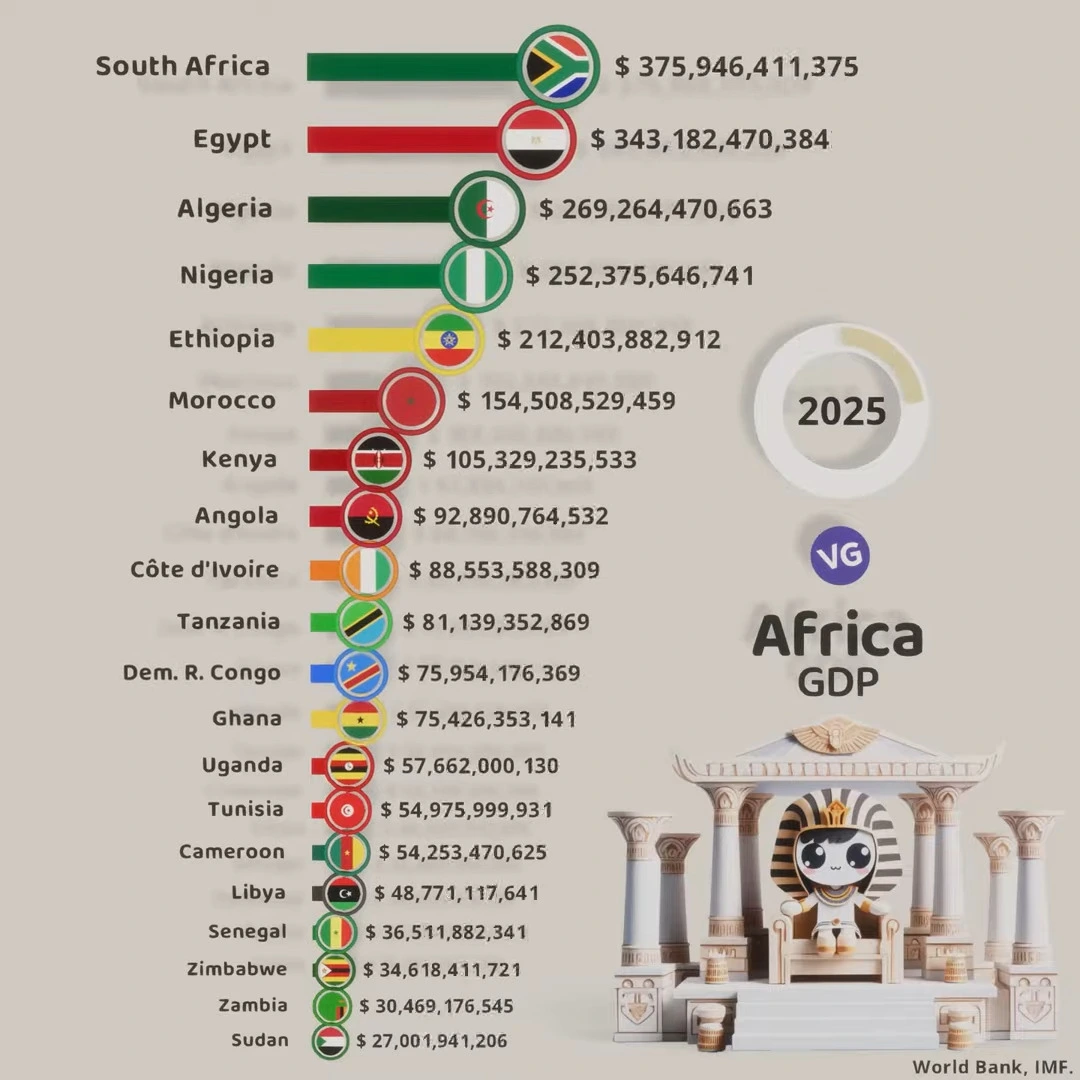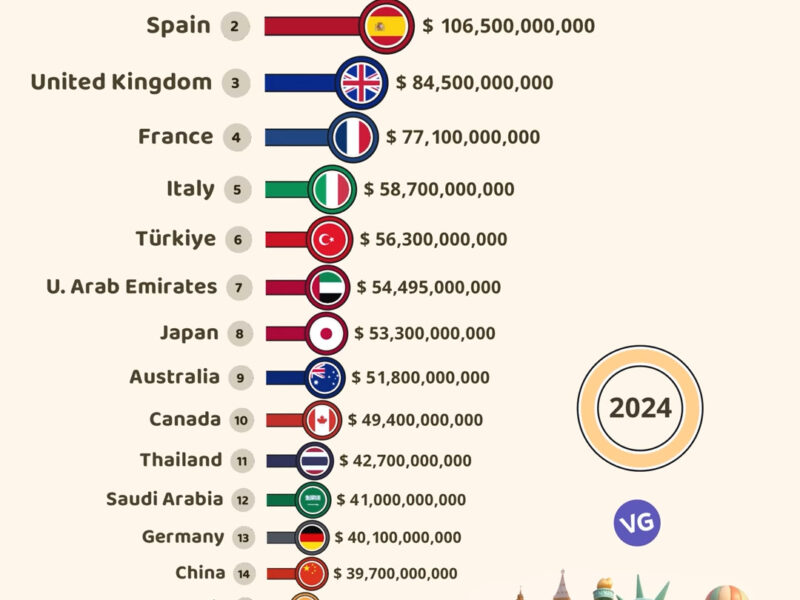The Economic Giants of Africa
The projected GDP figures for African nations in 2025 reveal fascinating insights into the continent’s economic hierarchy. South Africa maintains its position as the continent’s largest economy with a GDP of approximately $376 billion, followed closely by Egypt at $343 billion. Together, these two nations represent significant economic powerhouses in Africa’s diverse economic landscape.
Top 20 Largest African Economies (GDP – 2025)
| Rank | Country | GDP (USD) |
|---|---|---|
| 1️⃣ | 🇿🇦 South Africa | $375.95B |
| 2️⃣ | 🇪🇬 Egypt | $343.18B |
| 3️⃣ | 🇩🇿 Algeria | $269.26B |
| 4️⃣ | 🇳🇬 Nigeria | $252.38B |
| 5️⃣ | 🇪🇹 Ethiopia | $212.40B |
| 6️⃣ | 🇲🇦 Morocco | $154.51B |
| 7️⃣ | 🇰🇪 Kenya | $105.33B |
| 8️⃣ | 🇦🇴 Angola | $92.89B |
| 9️⃣ | 🇨🇮 Côte d’Ivoire | $88.55B |
| 🔟 | 🇹🇿 Tanzania | $81.14B |
| 11️⃣ | 🇨🇩 D.R. Congo | $75.95B |
| 12️⃣ | 🇬🇭 Ghana | $75.43B |
| 13️⃣ | 🇺🇬 Uganda | $57.66B |
| 14️⃣ | 🇹🇳 Tunisia | $54.98B |
| 15️⃣ | 🇨🇲 Cameroon | $54.25B |
| 16️⃣ | 🇱🇾 Libya | $48.77B |
| 17️⃣ | 🇸🇳 Senegal | $36.51B |
| 18️⃣ | 🇿🇼 Zimbabwe | $34.61B |
| 19️⃣ | 🇿🇲 Zambia | $30.47B |
| 20️⃣ | 🇸🇩 Sudan | $27.09B |
Data Source: World Bank, IMF
North African Economic Strength
The data shows remarkable economic strength across North Africa. Egypt, Algeria ($269 billion), and Morocco ($154 billion) collectively demonstrate the region’s substantial economic influence. This concentration of economic power in North Africa reflects the region’s strategic location, diverse economic activities, and historical trade relationships with Europe and the Middle East.
Sub-Saharan Economic Centers
Nigeria, traditionally West Africa’s largest economy, shows a projected GDP of $252 billion, while Ethiopia emerges as a significant economic force with $212 billion. These figures highlight the growing economic dynamism in Sub-Saharan Africa, particularly in regions with large populations and developing industrial bases.
Regional Economic Distribution
The data reveals interesting patterns in regional economic strength:
East Africa shows promising economic activity, with Kenya leading at $105 billion, followed by Tanzania ($81 billion), and Uganda ($57 billion). West Africa demonstrates significant economic diversity, from Nigeria’s leading position to Ghana’s $75 billion and Senegal’s $36 billion. Central Africa’s largest economy, the Democratic Republic of Congo, shows a GDP of approximately $76 billion.
Economic Challenges and Opportunities
The significant gap between the top economies and smaller ones like Zambia ($30 billion) and Sudan ($27 billion) highlights the continuing economic disparities across the continent. However, these figures also suggest opportunities for growth and development, particularly in nations with emerging markets and developing infrastructure.
Understanding these economic patterns is crucial for:
- International investors considering African markets
- Policymakers working on regional economic integration
- Development agencies focusing on economic growth initiatives
- Businesses exploring cross-border opportunities in Africa
This economic landscape reflects Africa’s complex development journey, showcasing both established economic powers and emerging markets poised for future growth.
Source: Based on projections from the World Bank and International Monetary Fund (IMF), 2025 forecast



